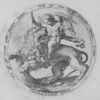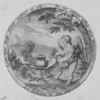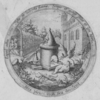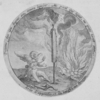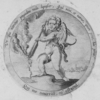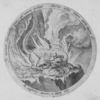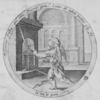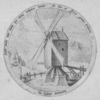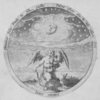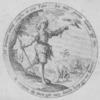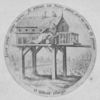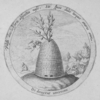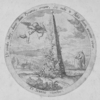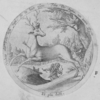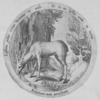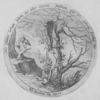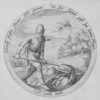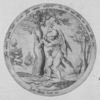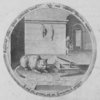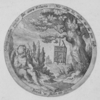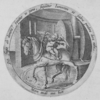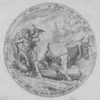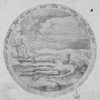Cosi de ben amar porto tormento [8]
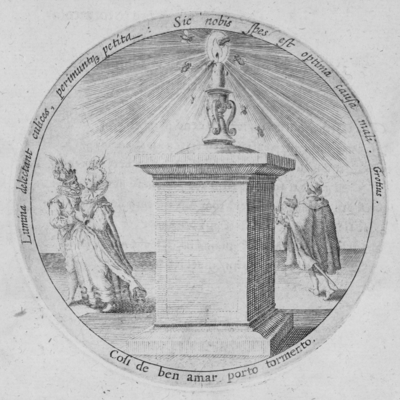
Den liefelicken schijn van haer twee schoone ooghen
Die trecken my tot haer wanneer zy sich vertooghen1/
Vertoogen ah eylaes/ ick schyne my te zijn
Verloren als ick ben van d’oorsaeck van mijn pijn.2
By d’oorsaeck van mijn pijn woud’ ick wel altijdt wesen/
Als ick ben by ’tverderf/ zo schijn ick te ghenesen.
Ick vliegh’ rondtom het vier/ ick blijf in eenen standt3
Ten zy dat ick my self vind ganschelick verbrandt.
Die trecken my tot haer wanneer zy sich vertooghen1/
Vertoogen ah eylaes/ ick schyne my te zijn
Verloren als ick ben van d’oorsaeck van mijn pijn.2
By d’oorsaeck van mijn pijn woud’ ick wel altijdt wesen/
Als ick ben by ’tverderf/ zo schijn ick te ghenesen.
Ick vliegh’ rondtom het vier/ ick blijf in eenen standt3
Ten zy dat ick my self vind ganschelick verbrandt.

Translations
 |
Zo draag ik de pijn van goed liefhebben. |
 |
Thus I bear the pain of loving well. |
 |
Muggen houden van het licht, maar sterven eraan als ze er naar toe gaan. Zo is onze grootste verwachting de oorzaak van ellende. |
 |
Mosquitos love the light, but die when they approach it. In the same way our greatest hope is the cause of our woe. |
Literature
-
Henkel and Schöne, Emblemata
 , col. 910
, col. 910
-
Praz, Seventeenth-Century Imagery
 , p. 93
, p. 93
Sources and parallels
- Same emblem in 1608 edition: Cosi de ben amar porto tormento [8] (in: Daniël Heinsius, Emblemata amatoria (1607/8))
[Compare
![Compare [compare]](/static/images/compare2.gif) ]
]
- Source for the motto: Petrarca, Canzoniere
 , poem. 207, 79
, poem. 207, 79 - Source for the metaphor of the lover as a moth in the fire: Petrarca, Canzoniere
 , poem. 19 and Petrarca, Canzoniere
, poem. 19 and Petrarca, Canzoniere , poem. 141
, poem. 141 - Source for the motto, pictura and entire emblem: Junius, Emblemata [web]
 , embl. 49
, embl. 49
- Source for the motto and pictura: Giovio, Dialogo dell'imprese
 , pp.
186-187
, pp.
186-187 - Parallel for the motto, pictura and entire emblem: Rollenhagen, Nucleus emblematum selectissimorum
 , bk/embl. I/64
, bk/embl. I/64 - Parallel for the pictura and entire emblem: Rollenhagen, Nucleus emblematum selectissimorum
 , bk/embl.
I/40
, bk/embl.
I/40 -
Parallel in the 1616 edition (motto and subscriptio the same, modified pictura (mirrored, more detailed in the background,
the single
lover walks towards the candle)): Cosi de ben amar porto tormento. [32] (in: Daniël Heinsius, Ambacht van Cupido, from: Nederduytsche poemata (1616))
[Compare
![Compare [compare]](/static/images/compare2.gif) ]
]
-
A parallel (and probably adaptation) for the subscriptio and probably entire emblem: Brevis et damnosa voluptas [52] (in: Otto Vaenius, Amorum emblemata (1608))
[Compare
![Compare [compare]](/static/images/compare2.gif) ]
]
-
Parallel for the entire emblem: main pictorial element the same (mosquitos flying towards a candle) and Latin subscriptio
the same. Brevis & damnosa voluptas [33] (in: Otto Vaenius, Emblemata aliquot selectiora amatoria (1618))
[Compare
![Compare [compare]](/static/images/compare2.gif) ]
]
References, across this site, to this page:
- Cosi de ben amar porto tormento [8] (in: Daniël Heinsius, Emblemata amatoria (1607/8))
- Cosi de ben amar porto tormento. [32] (in: Daniël Heinsius, Ambacht van Cupido (1613))
- Cosi de ben amar porto tormento. [32] (in: Daniël Heinsius, Ambacht van Cupido, from: Nederduytsche poemata (1616))
- Brevis et damnosa voluptas [52] (in: Otto Vaenius, Amorum emblemata (1608))
- Brevis & damnosa voluptas [33] (in: Otto Vaenius, Emblemata aliquot selectiora amatoria (1618))
Iconclass
A man looking into the eyes of his beloved; moths flying into the flame of a candle; a man with a dagger- insects: moth (+ flying animal(s))
[25F711(MOTH)(+5262)]

- insects: moth (+ dying animal; death of animal; dead animal)
[25F711(MOTH)(+63)]

- lover (man) alone (e.g. longing for the beloved)
[33C2161]

- arm in arm (lovers)
[33C231]

- candle (+ kindling a light; lit, burning light, lamp, candle)
[41B31(+1)]

- column, pillar ~ architecture
[48C161]

- Pain, Sorrow, Sadness; 'Dolore', 'Dolore di Zeusi' (Ripa) (+ emblematical representation of concept)
[56BB1(+4)]

- (personifications and symbolic representations of) Love; 'Amore (secondo Seneca)' (Ripa) (+ emblematical representation of
concept)
[56F2(+4)]

- proverbs, sayings, etc. (with TEXT)
[86(COSI DE BEN AMAR PORTO TORMENTO)]

![[H O M E : Emblem Project Utrecht]](/static/images/rd-small.gif)


